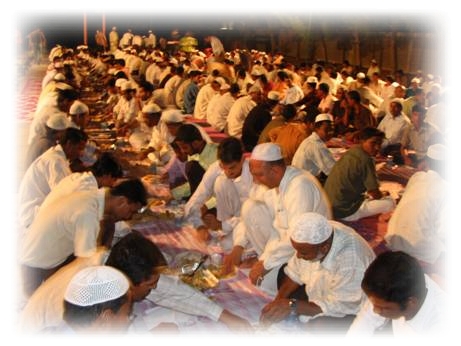Hamad Medical Corporation (HMC) has advised residents to create a proper meal planner in advance that will enable healthy eating and ensure that their body gets the daily required nutrients during Ramadan.

According to Rawdha Jassim al-Muttawa, specialist dietitian at HMC, meals during Ramadan are divided into four parts – Iftar, after Taraweeh prayers, after midnight and Suhoor (pre-dawn).
“It is natural to have Iftar full of flavoured dishes as it can include food choices from both lunch and dinner but it should still be a healthy meal and overeating should be avoided,” she said.
Al-Muttawa stressed that making a healthy choice requires a change in food habits. “It is ideal to first eat three pieces of dates at Iftar, followed by a drink of water or fresh juice or low-fat yogurt to compensate for the dehydration and to provide your body with its relevant nutritional requirements.”
“At Iftar, it is always advisable to give the stomach some time to relax and adjust to receiving food after the long fasting hours. Before eating solid foods after Maghreb prayer, a cup of soup and some low-calorie salads, rich in fibres, are good for the stomach and preventing constipation and indigestion,” said al-Muttawa, adding that the main course can contain protein (red meat, poultry or seafood) and a type of starch (rice or bread). She suggested that meals should also be prepared in healthy ways such as steaming, boiling or grilling.
Al-Muttawa advised that the ideal light meal after Taraweeh can be any type of starch, such as a small roll, and a piece of fruit with a cup of low-fat milk and its products.
She cautioned against eating foods high in calories during the midnight meal called Ghabka, a common tradition during Ramadan. “Eating Ghabka is among the most common traditions of Ramadan. People should opt for a more healthy choice such as vegetables, a type of meat, any starchy food and a half cup of fresh juice or a piece of fruit. They should avoid high-calorie foods that can lead to weight gain,” she advised.
SHOW_GAD
“Suhoor meal is considered the ‘must-have’ main meal in order to avoid hunger during fasting hours. Proteins, oils and complex carbohydrates (beans family) are the best choice for Suhoor. Skipping Suhoor or eating fast foods high in fat and salt can also trigger thirst during fasting hours,” she noted.
Al-Muttawa said traditional foods such as fried samosa, “thireed” (red meat with bread), and “harees” (oats pureed with oil) are calorie-packed and should be prepared in a more healthy way.
“I advise eating fewer sweet desserts that most people consume during Ramadan because the sweets contain high starch, sugars and saturated fats that suppress appetite and prevent the urge to eat healthy food,” she said.
She also advised against drinking too much tea and coffee in Ramadan as they tend to block iron absorption and increase urine flow that can lead to dehydration. “It is advisable to replace tea and coffee with mint and ginger drinks to avoid bloating. Ideally, a fasting person should drink up to eight glasses of water between Iftar and Suhoor.”
